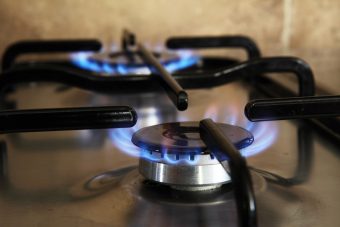
Russia’s continued curtailment of natural gas flows to Europe has pushed international prices to painful new highs, disrupted trade flows and led to acute fuel shortages in some emerging and developing economies, with the market tightness expected to continue well into 2023, according to the IEA’s latest quarterly Gas Market Report.
Natural gas markets worldwide have been tightening since 2021, and global gas consumption is expected to decline by 0.8 percent in 2022 as result of a record 10 percent contraction in Europe and unchanged demand in the Asia Pacific region. Global gas consumption is forecast to grow by only 0.4 percent next year, but the outlook is subject to a high level of uncertainty, particularly in terms of Russia’s future actions and the economic impacts of sustained high energy prices.
Russia has largely cut off gas supplies to Europe in retaliation against sanctions imposed on it following its invasion of Ukraine. This has deepened market tensions and uncertainty ahead of the coming winter, not just for Europe but also for all markets that rely on the same supply pool of liquefied natural gas (LNG).
“Russia’s invasion of Ukraine and sharp reductions in natural gas supplies to Europe are causing significant harm to consumers, businesses and entire economies – not just in Europe but also in emerging and developing economies,” said Keisuke Sadamori, the IEA’s Director of Energy Markets and Security. “The outlook for gas markets remains clouded, not least because of Russia’s reckless and unpredictable conduct, which has shattered its reputation as a reliable supplier. But all the signs point to markets remaining very tight well into 2023.”
The current gas crisis also casts longer-term uncertainty on the prospects for natural gas, especially in developing markets where its use was expected to rise at least in the medium term as it replaced other higher-emission fossil fuels.
European natural gas prices and Asian spot LNG prices spiked to record highs in the third quarter of 2022. This reduced gas demand and incentivised switching to other fuels such as coal and oil for power generation. In some emerging and developing economies, the price spikes triggered shortages and power cuts. Europe’s gas consumption declined by more than 10 percent in the first eight months of this year compared with the same period in 2021, driven by a 15 percent drop in the industrial sector as factories curtailed production.
More:
Natural gas demand in China and Japan was almost unchanged in that same period, while it contracted in India and Korea. Chinese gas demand is forecast to increase by less than 2 percent this year, its lowest annual growth rate since the early 1990s. Meanwhile, natural gas prices in the United States hit their highest summer levels since 2008, yet North America was one of the few regions of the world where demand increased, supported by demand from power generation.

Europe has offset the sharp falls in Russian gas supplies through LNG imports, as well as alternative pipeline supplies from Norway and elsewhere. Europe’s surging demand for LNG – up 65 percent in the first eight months of 2022 from a year earlier – has drawn supply away from traditional buyers in the Asia-Pacific region, where demand dropped by 7 percent in the same period as a result of high prices, mild weather and continued Covid lockdowns in China.
The IEA forecasts that Europe’s LNG imports will increase by over 60 billion cubic metres (bcm) this year, or more than double the amount of global LNG export capacity additions, keeping international LNG trade under strong pressure for the short- to medium-term. This implies that Asia’s LNG imports will remain lower than last year for the rest of 2022. However, China’s LNG imports could rise next year under a series of new contracts concluded since the beginning of 2021, while a colder-than-average winter would also result in additional demand from northeast Asia, further adding to market tightness.
In addition to diversifying supply, the European Union and its member states have taken other steps to increase gas security, such as setting minimum storage obligations and implementing energy saving measures for the coming winter. EU storage facilities were close to 90 percent full as of the end of September, though the absence of Russian supply presents challenges for refilling them next year. Both Japan and Korea have instituted policies to reduce reliance on imported LNG for power generation and have developed contingency plans for possible LNG supply disruptions.
For the new report, the IEA conducted a resilience analysis of the EU’s gas market in the case of a complete Russian supply shutdown starting from 1 November 2022. The analysis shows that without demand reductions in place and if Russian pipeline supply is completely cut, EU gas storage would be less than 20 percent full in February, assuming a high level of LNG supply – and close to 5 percent full, assuming low LNG supply. Storage falling to these levels would increase the risk of supply disruptions in the event of a late cold spell. A reduction in EU gas demand through the winter period of 9 percent from the average level of the past five years would be necessary to maintain gas storage levels above 25 percent in the case of lower LNG inflows. And a reduction in demand of 13 percent from the 5-year average would be necessary through the winter period to sustain storage levels above 33 percent in the case of low LNG inflows. Therefore, gas saving measures will be crucial to minimise storage withdrawals and keep inventories at adequate levels until the end of the heating season.
Source: IEA





